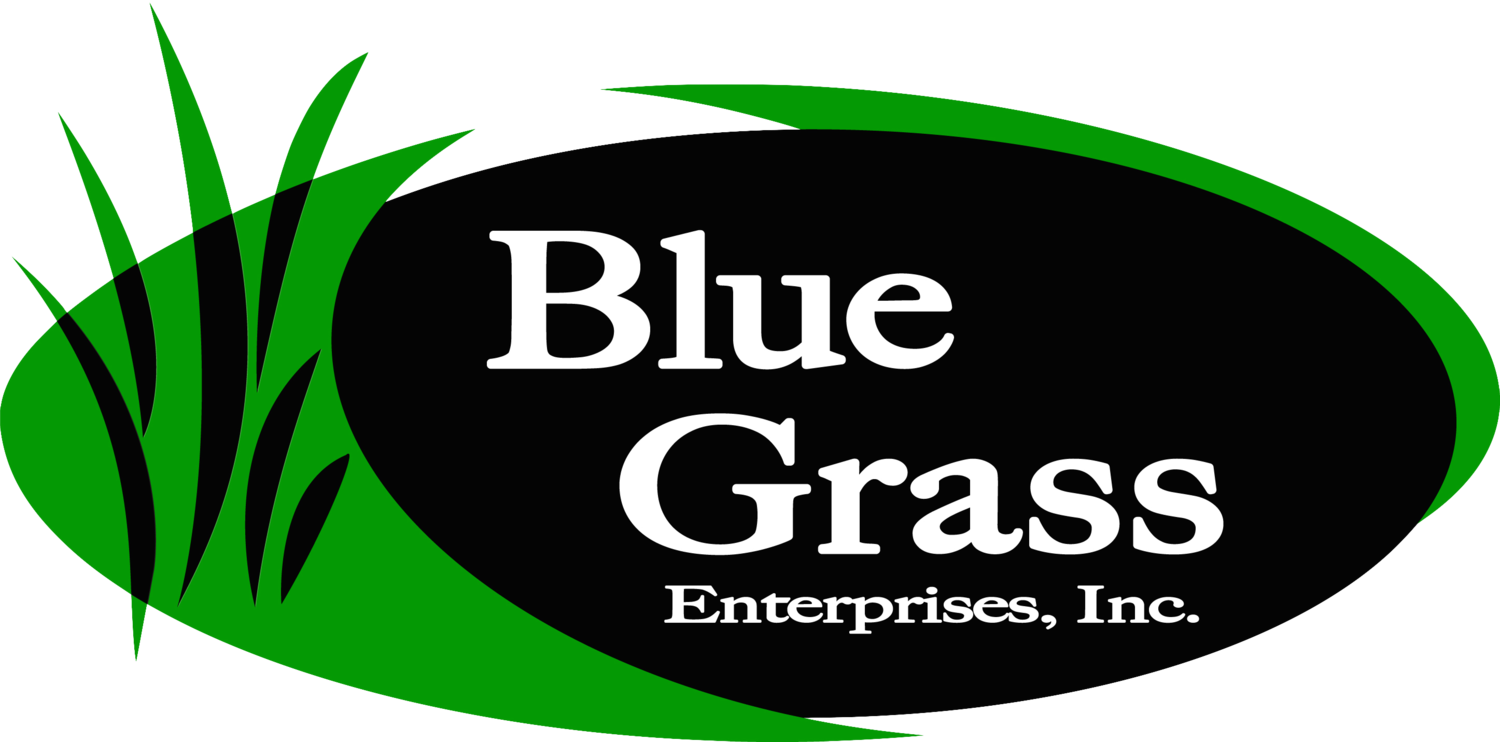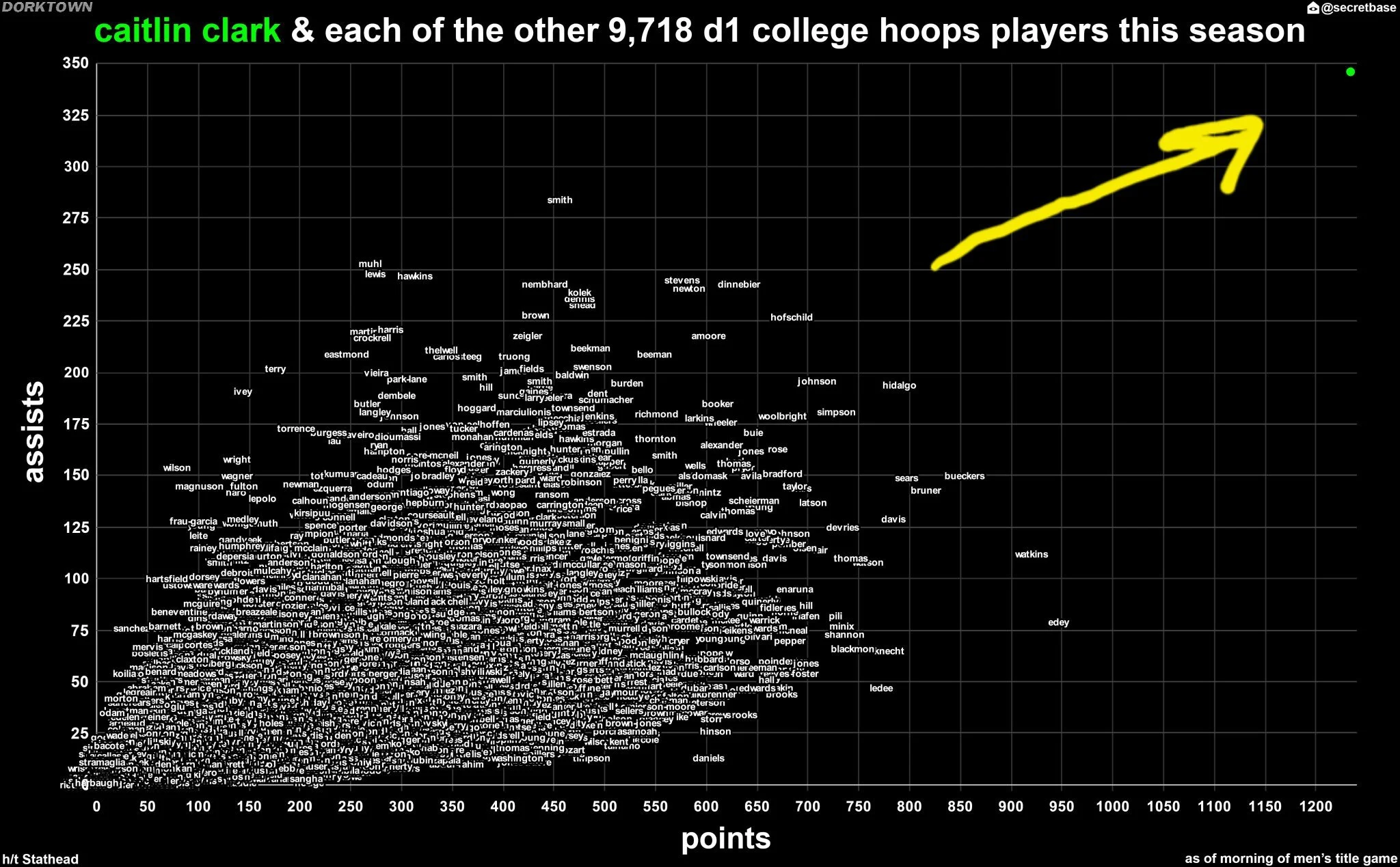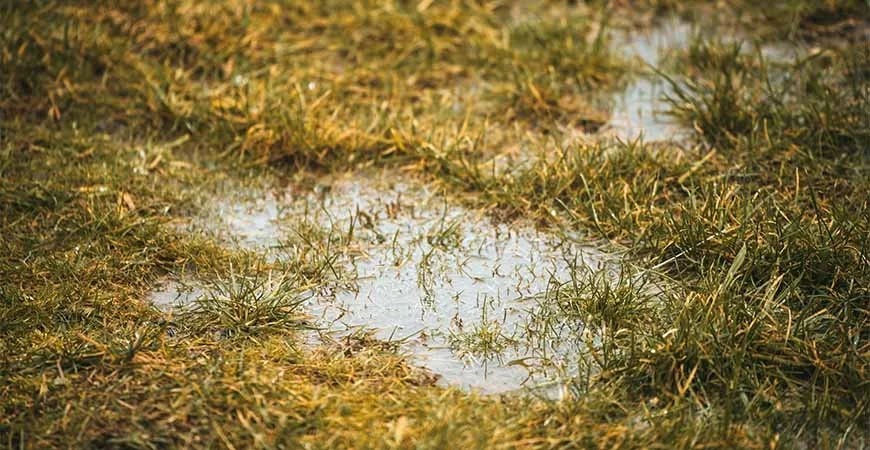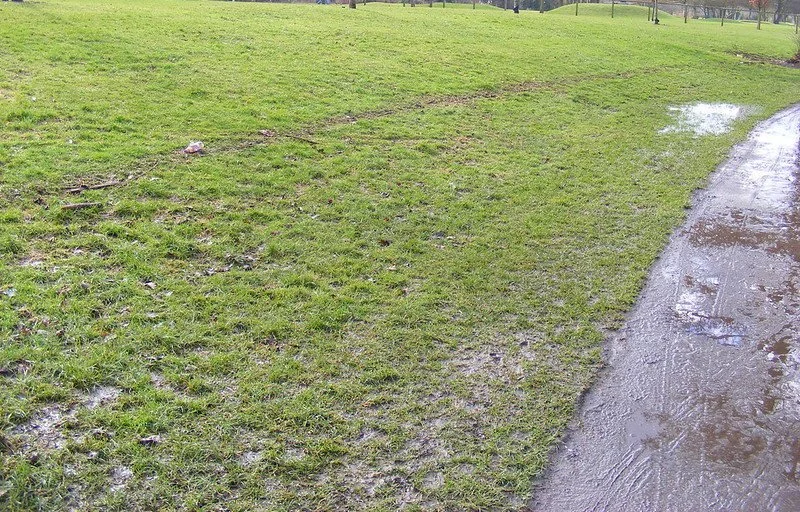No One Wants a Soggy Bottom
As the esteemed Mary Berry from “The Great British Bake Off” regularly notes, “No one wants a soggy bottom.” While Britian’s queen of desserts is discussing baked goods, your friends at Blue Grass would like to suggest Ms. Berry is right about lawns, too. Plant bottoms (roots) don’t like being soggy all the time either.
But don’t roots love water? Isn’t that how plants survive?
Yes and no.
One detail about root zones we humans tend to forget is a healthy root zone will be full of empty spaces. These spaces allow oxygen to reach the root zone, which helps in nutrient uptake, among other things.
When a root zone is either heavily compacted due to foot traffic or highly saturated, you will experience a reduction in healthy root material because the plant roots cannot breathe.
This image from Kansas State University of a saturated root zone’s impact on a wheat (also a grass) plant is a helpful depiction of what happens in your lawn grasses when your soils are heavily saturated.
So what should i watch out for?
Lots of things, and the good news is not all of them are bad! However, some of them (like flooding) can be tough to navigate. So let’s start small and work up from there. Buckle up, folks! This article is a big one!
Mushrooms, Mushrooms!
One of the most common questions we receive during wet periods is, “Should I be worried about these mushrooms in my lawn?” Short answer? No. Longer answer? Still pretty much no.
Mushrooms are signs of healthy biological activity in your upper soil profile. If anything, feel free to breathe a sigh of relief that something happy is happening!
If you are concerned about kiddos or doggos touching lawn mushrooms, you can mow the mushrooms off.
If you want help identifying mushrooms in your lawn, especially to determine if they would be great on your dinner plate, we recommend contacting the Iowa State Extension Office.
Fairy rings!
If you have ever had a Fairy Ring appear in your lawn you have likely thought you had a residential version of a crop circle in your lawn.
There are three types of Fairy Rings we commonly see.
Type 1: A circle lighter in color than all surrounding area
Type 2: A circle darker than the surrounding area
Type 3: A mushroom Fairy Ring
Like mushrooms, Fairy Rings are a sign of healthy biological activity in the soil.
If you are annoyed by the discoloration of the ring, you can mask the symptom by giving the area an extra feeding of 13-13-13 to give the lawn a more even color appearance.
If the Fairy Ring is a “Type 3” mushroom ring, repeated mowings, and drier conditions will help slow the mushroom growth long-term.
increased Weed Pressure due to excessive water
Now we are getting into the more serious issues that can arise in lawns due to exceptionally wet growing seasons. Hold on to your hats (and your umbrellas).
Super wet conditions increase weed pressure in homeowner lawns for multiple reasons.
Excessive water application (rain or irrigation) will reduce the efficacy of weed-prevention products. Weed preventers (such as crabgrass preventers) are designed to last for a certain amount of time given the rate of application. At Blue Grass, for example, our Step 2 products last for either 120 or 160 days depending on which product you use and weather conditions. The 120-day and 160-day numbers are based on ideal growing conditions and “normal” weather conditions. This means if a growing season is far too wet or dry, far too cold or hot, you will observe a divergence from those estimated days of control.
Low spots will experience increased weed pressure. Low spots, where water tends to sit in your lawn, will have even more weed pressure (see point above), PLUS will have likely thinned due to root rot, allowing for many more opportunities for weeds to wiggle their way into your lawn. You will also notice more pressure from water-loving weeds, like yellow nutsedge.
Decreased mowing opportunities will increase some types of weed pressure. You would be surprised how many weeds are controlled by regular mowing, rather than chemical application. These weeds are not a concern for us, as we assume there will come a time when the rains will subside and regular mowings will return, allowing for natural control of these weeds.
How can you combat increased weed pressure in your lawn during a year that is excessively wet?
Watch for signs that your Step 2 Crabgrass Preventer is losing steam.
The best areas to observe are those that get “extra pressure” from the weather; for example, along driveways where heat damage teams up with water runoff, or where downspouts eject water onto the property.
Use those areas as your “canary in a coal mine,” letting you know when the rest of your lawn is about to experience a breakdown in preemergent efficacy. If you see consistent weed pressure happening in these spots, give us a call for some 20-0-5 w/ Dimension. 20-0-5 w/ Dimension is one of our Step 2 products which can be applied any time during the growing season to prevent future pressure of 42 different species of common lawn weeds (including summer annuals like crabgrass) to help prevent future weed pressure for approximately 120 days. In most cases, a mid-summer application will provide coverage until the end of the Iowa growing season.
As a native Iowan, I am contractually obligated to point out how amazing Caitlin Clark is at every opportunity. I know this isn’t lawn related but LOOK AT THIS CHART
Please keep in mind if the weed pressure you are seeing is still minor as we approach mid-September or October (the end of our typical growing season), we recommend spot-spraying areas of break-through rather than a full-yard application.
Remember in Iowa, Mother Nature will give you a Caitlin Clark-level assist by killing all summer annuals around the 15th of October with her first big frost anyway!
high fives Mother Nature
Need a reminder of what summer annuals look like? Check out this article about summer annuals here.
Disease Pressure
I made this little chart to help illustrate what three criteria must exist for a disease to actually occur in your lawn.
Fortunately for those of you who have our sod, the cultivars of Kentucky bluegrass we select for production at our farm are genetically capable of a great deal of disease tolerance. Our careful cultivar selection is a large part of why we see very little disease pressure in our fields and customer communities. You have probably heard us actively coach customers to avoid annual fungicide usage.
Three factors must work in concert for a disease to occur in your lawn. First, your lawn must be susceptible to the disease either genetically or through increased pressure (such as physical damage from flooding, poor nutrition, or low-mowing practices).
Then, the environment for the disease must exist. Factors like weather conditions, soil pH, sunlight & airflow access, and soil temperatures all impact disease pressure.
Finally, the disease pathogen itself must exist in the lawn.
If any one of those three factors is not present or suddenly changes, it will dramatically impact the possibility of the presence of the disease, which is why we work so hard with people to get good feeding and cultural practices going in their lawn care routines. Your behaviors have a LOT of impact on both the susceptibility and environment of your lawn.
That said, it is possible that a year with excessive heat and moisture would cause an increase in disease pressure.
If you are concerned you may be seeing something that is “rotten in the state of Iowa” going on in your lawn, we highly encourage you to take photos of the area and email them to info@bgsod.com so we can help you diagnose the problem before you try to treat the issue on your own. It is very, very important to have a correct ID of a disease before you start trying to treat the problem.
Want to read more about diseases in Iowa lawns? Check out this article “A Fungus Among Us”.
Lawn damage & Repair for ponding
Low spots take a little elbow grease, but generally are “quick fixes” and you will thank yourself longterm!
Ponding occurs in areas with poor drainage or depressions (low spots) in the lawn. Prolonged submersion in low spots, even with very shallow water, can be problematic for plants.
If the crown of the plant is completely submerged for more than a day or two you will likely experience significant damage. This damage results primarily from roots dying off due to their inability to breathe. This phenomenon is called “root rot.”
The dead material will quickly start to break down in these environments causing the affected areas to smell of rot as this process takes root (pun intended).
The reduction in root mass becomes especially problematic after waters recede and weather conditions return to regular or less frequent rain events because the plants have fewer healthy roots to pull water from lower soil profiles. It will seem like these low areas in your lawn swing from one extreme (flooding) to the next (drought stress) with no transition time between the two circumstances. This is a sign of poor root material beneath the surface.
To repair ponding you will want to physically improve the grade of the area. This may mean regrading, adding soil to the area to raise the depression, or installing subsurface drainage.
Remember to avoid driving through any visibly wet areas when mowing!
Lawn damage Due to flash flood
This area would easily be repaired with aeration and 13-13-13
In the case of a flash flood, damage may be mainly due to debris and silt covering the area.
Do your best to clean off silt as best you can before taking additional steps. It is possible if the submersion was very, very fleeting and the plants were successfully cleaned that major injuries may have been avoided.
If the area is recovering due to your quick intervention or the waters receded very quickly, but you still feel the area needs a bit of a pick-me-up, apply 13-13-13 to the area to help thicken the damaged plants and give them the energy they need to repair themselves.
Be sure to core aerate this area regularly to ensure maximum drainage during a future flash flooding event. Keep an eye on the location for increased weed or disease pressure for the rest of the season.
Repair for minor and major flooding
Unfortunately, even seemingly brief submersion underwater during a hot Iowa summer can result in significant damage. The primary damage to the plants will be influenced by water temperature and water depth.
Water temperature is the most important factor determining survival. Plant death occurs quickly when water temperatures are 80 degrees or higher. This is because hot, shallow water “boils” the crown of the plant to death.
Cooler water temperatures can still kill lawns quickly due to suffocation and lack of sunlight.
As discussed above, sediment buildup, fungal diseases, and weed infestation can all leave a lasting impact on any affected areas once the flood dissipates. Overall, recovery will likely require a significant renovation of the affected area.
Follow these steps to repair flooded areas:
As soon as the lawn is dry underfoot (this could take several weeks), you can begin repairs
Focus on any repairs or regrading that can be done that will minimize future risk of floods to the area
If weeds have sprouted since the flooding occurred, you should spray a non-selective herbicide to avoid contamination of your future lawn by any noxious, invasive weed seeds that were deposited onto your property.
Till or aggressively aerate the affected area by going over it several times with a core aerifier.
Apply 13-13-13 starter fertilizer to bare soil and then immediately install sod. Using sod (rather than seed) will allow you to still be able to control for any weed or disease pressure that may present during the rest of the growing season. Sod also provides the additional benefit of “smothering” any potential weed seeds that were deposited into the area that have not yet germinated.
If seeding the area (August, May, or early November) follow our instructions for seeding here.
Been affected by lots and lots of water and not sure what to do?
Remember we are always here to answer questions and give advice for repairs. Please don’t hesitate to reach out by calling or emailing info@bgsod.com for guidance specific to your situation.











